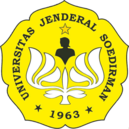Wasei-Eigo Analysis on Instagram Social-Media: a Review of Sociolinguistics Study
Abstract
Wasei-eigo is a word or combination of words originating from English and then being adopted into a Japanese vocabulary with a different meaning from the original speaker in other words wasei-eigo is English made by the Japanese. This study aims to describe the process of wasei-eigo formation and classify the types of wasei-eigo found on Instagram social media. The main theory is based on the theories of Shibasaki, Tamoka, and Takatori. The method used in this research is the descriptive qualitative method. The data source comes from the captions of Japanese Instagram social media users uploaded from 2021 to early 2022. The results show that from the 45 wasei-eigo data studied, there are four processes of wasei-eigo formation: affixation, merging, cutting, and borrowing. In the classification, there are 15 data included in Imizurekata, 11 data included in Tanshukukata, 2 data included in Junwaseikata, and 12 data included in Eigohyougenfuzaikata. This is related to the many uses of English adopted in the life of Japanese society. Wasei-eigo can be found in various aspects of life such as social, cultural, economic, or technological with the initial purpose of being a commercial form of a product and meeting the needs of the lexical gaps in the Japanese language.
References
Farabiansyah, M. Y. N., & Sopaheluwakan, Y. B. (2020). Kata Pinjaman Wasei Eigo (Bahasa Inggris Jepang) Dalam Komik Jepang Takagi Sang Ahli Jail Karya Souichiro Yamamoto. Hikari, 4(1), 131–141.
Goddard, J. A. (2019). Recognition of English Loanwords (waseieigo) Among Japanese University Students. Eigo-Gaku Ronsetsu Shiryou, Ronsetsu Shiryo Hozonkai, 51(May), 59–66.
Hatanaka, M., & Pannell, J. (2016). English Loanwords and Made-in-Japan English in Japanese. Hawaii Pacific University TESOL Working Paper Series, 14(2016), 14–29. http://www.hpu.edu.
Miles, M. B., & Huberman, A. M. (1994). Qualitative data analysis: An expanded sourcebook. sage.
Moleong, L. J. (2017). Metodogi Penelitian Kualitatif. Bandung: PT Remaja Rosda Karya.
Norman, J. (2012). Japanese university student awareness of waseieigo. JALT 2011 Conference Proceedings, 442–454.
Olah, B. (2007). English Loanwords in Japanese : Effects , Attitudes and Usage as a Means of Improving Spoken English Ability. Bunkyo Gakuin Daigaku Ningen Gakubu Kenkyuu Kiyo, 9(1), 177–188.
Putri, M. A. (2018). Wasei eigo (Japlish) pada Buku Teks Bahasa Jepang. Journal of Japanese Language Education and Linguistics, 2(2), 275–293. https://doi.org/10.18196/jjlel.2218
Tomoda, T. (2002). Defining the concept of loanword in Japanese: Results from a survey of 860 respondents. Monash University Linguistics Papers, 2(2), 3–14.
Tsujimura, N. (2013). An introduction to Japanese linguistics. Oxford: Blackwell Publishers Ltd.
Wahyuni, D., & Nasihin, A. (2014). Konstruksi Morfem Wasei-Eigo Kajian Morfologi. Abstract of Undergraduate Research, Faculty of Humanities, Bung Hatta University, 1(3).
Yaniar, E. S., & Masrokhah, Y. (2021). Analysis of the Formation of Gairaigo in Japanese Commercial Advertisements for the 2016 - 2020 Advertising Period (Reviewed from Morphological Studies). Proceedings of the 1st Annual International Conference on Natural and Social Science Education (ICNSSE 2020), 90–96. https://doi.org/10.2991/assehr.k.210430.013
Shibazaki, H., Tamaoka, G., & Takatori, Y. (2007). Amerika-jin wa Wasei Eigo o Dono Kurai Rikai Dekiru ka -Eigo Bogowasha no Wasei Eigo no Chishiki to Imi Suisoku ni Kansuru Chosa-. Nihongo Kagaku, 21.

This work is licensed under a Creative Commons Attribution-ShareAlike 4.0 International License.
Authors who publish with Jurnal Ilmiah Lingua Idea agree to the following terms:
- Authors retain copyright and grant the journal right of first publication with the work simultaneously licensed under a Creative Commons Attribution License (CC BY-SA 4.0) that allows others to share the work with an acknowledgment of the work's authorship and initial publication in this journal.
- Authors are able to enter into separate, additional contractual arrangements for the non-exclusive distribution of the journal's published version of the work (e.g., post it to an institutional repository or publish it in a book), with an acknowledgment of its initial publication in this journal.
- Authors are permitted and encouraged to post their work online (e.g., in institutional repositories or on their website) prior to and during the submission process, as it can lead to productive exchanges, as well as earlier and greater citation of published work.





















.png)




_.png)


